An EQIP Success Story from Shaw Island, Washington
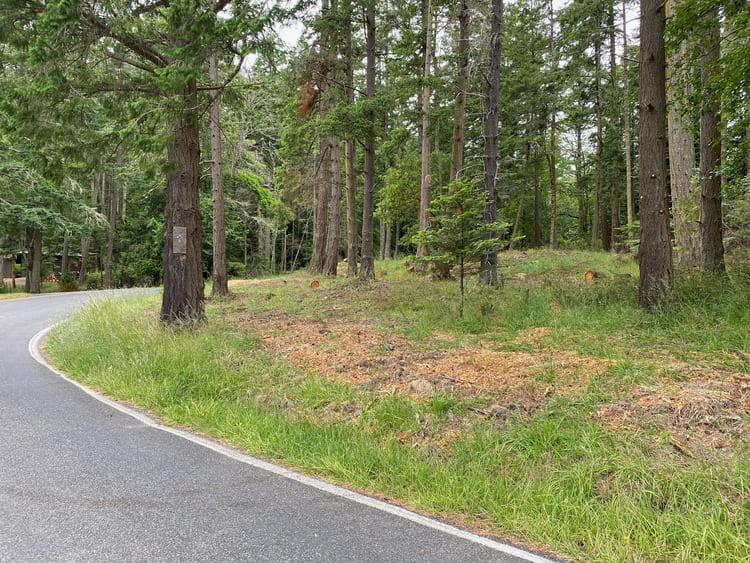
AN EQIP-FUNDED FOREST RESTORATION AND FIRE MANAGEMENT PROJECT ON SHAW ISLAND SPARKS A CHAIN REACTION OF GOOD STEWARDSHIP
Around 200 people call Shaw Island home, among them Lynn Bahrych, formerly a Commissioner for the Washington State Conservation Commission and co-chair of the Washington State Soil Health Committee. Lynn is steward and owner of Osprey Pond, a 64-acre forest and wildlife pond on the northwestern end of the island. With financial support from the Environmental Quality Incentives Program (EQIP), Lynn has embarked on a project to transform her tinderbox “wall of trees” into a fire- and climate-resilient forest that more closely resembles the natural, fire-adapted forest of millennia past.
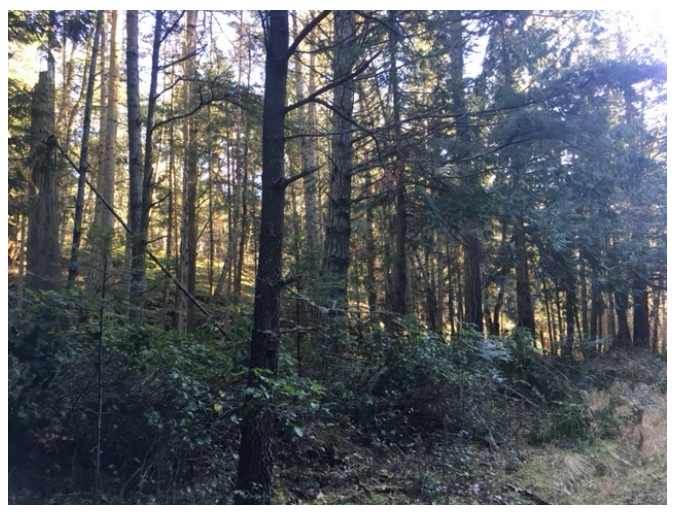
AN ISLAND WITHOUT FIRE
Shaw Island is the smallest of the four islands served by the San Juan ferries. With little commercial activity or public access beyond a county park campground and a small but well-equipped general store at the ferry terminal, Shaw isn’t as likely a destination for visitors as the larger islands of Orcas and San Juan. But like the forests on other islands, Shaw’s forests are at high risk of stand-replacing wildfire. For millennia, frequent low-severity fires kept forest stands relatively open and shaped a community of fire-tolerant and fire-dependent vegetation. Indigenous peoples set fires to cultivate edible or medicinal plants, maintain hunting grounds, and as defense against other people. With European and colonial settlement in the San Juans came fire suppression. The islands were home to a robust timber economy, which was threatened by wildfire.
Without their natural fire ecology, Shaw’s forests have closed in, becoming vulnerable to tree diseases and invasive plants. Today Lynn’s Osprey Pond property and much of the land around it is blanketed in dense and dark forest. “The fire ecology that the forests depend on for health has been suppressed for over 100 years,” says Lynn.
It’s not much of an exaggeration to describe the forests as a tinderbox. The dense spacing of trees has created significant competition for light, water, and nutrients, so trees are relatively small in diameter and ringed with thin, dead lower branches that act as ladder fuels in the event of a wildfire. Fire-dependent species like Pacific madrone (Arbutus menziesii) are being crowded out by fire-intolerant species like Douglas fir (Pseudotsuga menziesii). The San Juans lie in the rainshadow of the Olympic range and receive less rain than other parts of western Washington; this means that in a warmer and drier future, the forests of the San Juans will be especially at risk of fire as fuels dry out during spring and summer. To top it all off, many county roads on Shaw Island are lined with dense forest, so there’s little room for firefighters to stage equipment in the event of a wildfire.
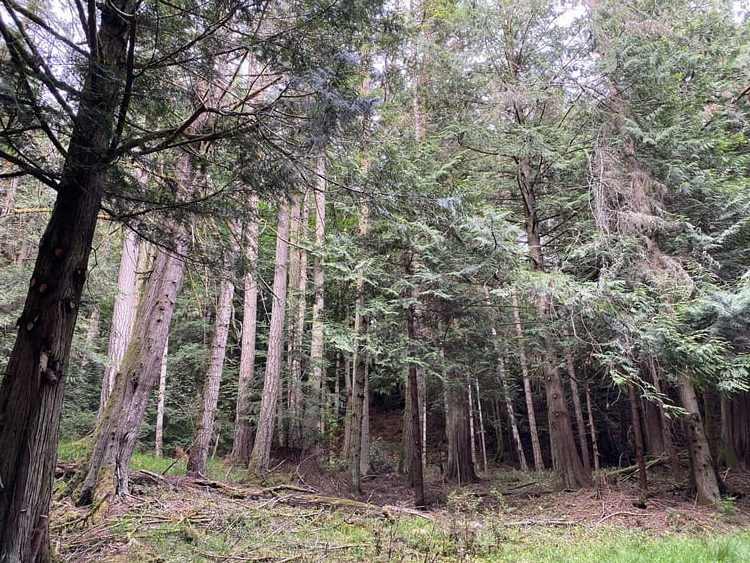
A PLAN, A PROJECT, AND AN EQIP CONTRACT (OR TWO)
A full-time resident on Shaw, Lynn has long understood the threat her forest faces. In 2016, Lynn set a plan in motion to make her property more fire-safe. Lynn planned to apply for EQIP funding to cover the cost of creating fuel breaks along the portions of her property that edged the county road. But at the time, she didn’t meet one of the main prerequisites for receiving EQIP funding: Osprey Pond didn’t have a forest management plan. Happily, EQIP can also help pay to commission such a plan, so after applying for and securing an EQIP contract for a forest management plan, Lynn hired NNRG Director of Forestry Kirk Hanson to write a 20-year plan for Osprey Pond. EQIP reimbursed her for about half of its cost.
As to be expected, Kirk recommended doing some significant thinning in Osprey Pond’s forests to improve their overall health and reduce the risk of wildfire. “He said I have about three times as many trees as would have historically been here,” says Lynn, with whom NNRG spoke recently by phone. “I’m looking at a thick wall of dark green.”
With a management plan in hand, in 2019 Lynn applied for EQIP funding for the fuel break project. “What I wanted to do was to demonstrate the transformation from unhealthy dense forest to a more open, light-filled healthy forest for the folks at my end of the island,” says Lynn. “My part of the island is designated as a high risk area for fire. The fuel break would give firefighters a defensible space for staging equipment and fighting fire. It would also give people a safe exit route. Cars will be able to travel to get away from a fire, without driving through a fire tunnel.”
The second EQIP application was, “a lot easier,” says Lynn, “because the required property information was already in the NRCS system, so I didn’t have to fill it all out a second time.” Plus, EQIP applications don’t require too much detail in advance about the project itself. For example, it’s not necessary to name the contractor who will be hired for a project, and a forest practices permit does not need to be secured before applying for EQIP.
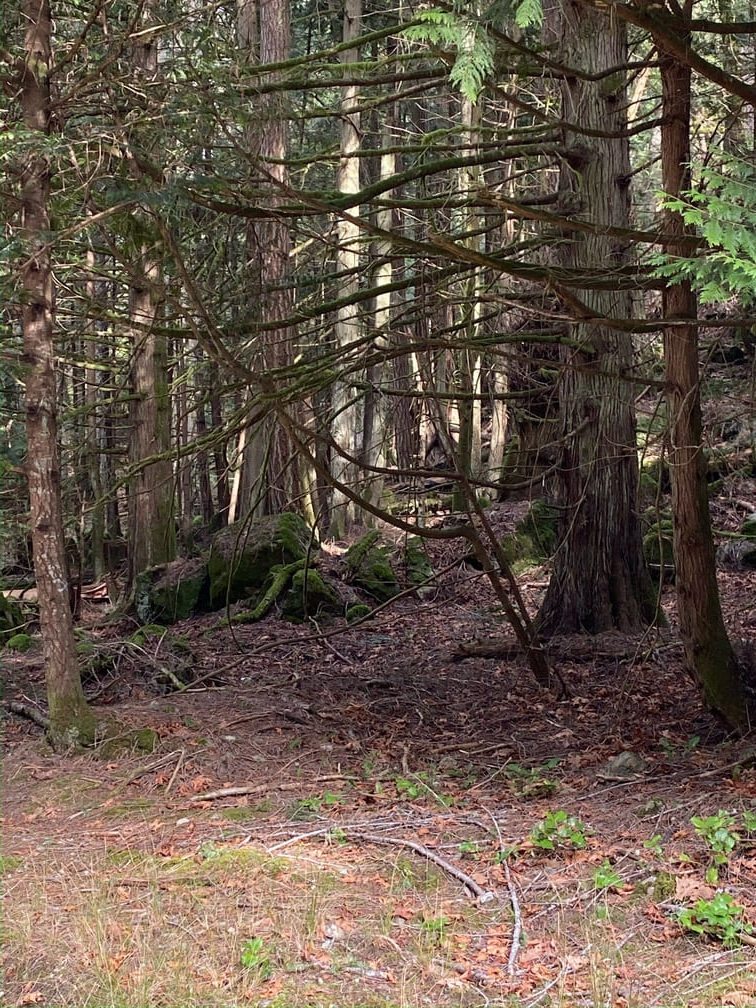
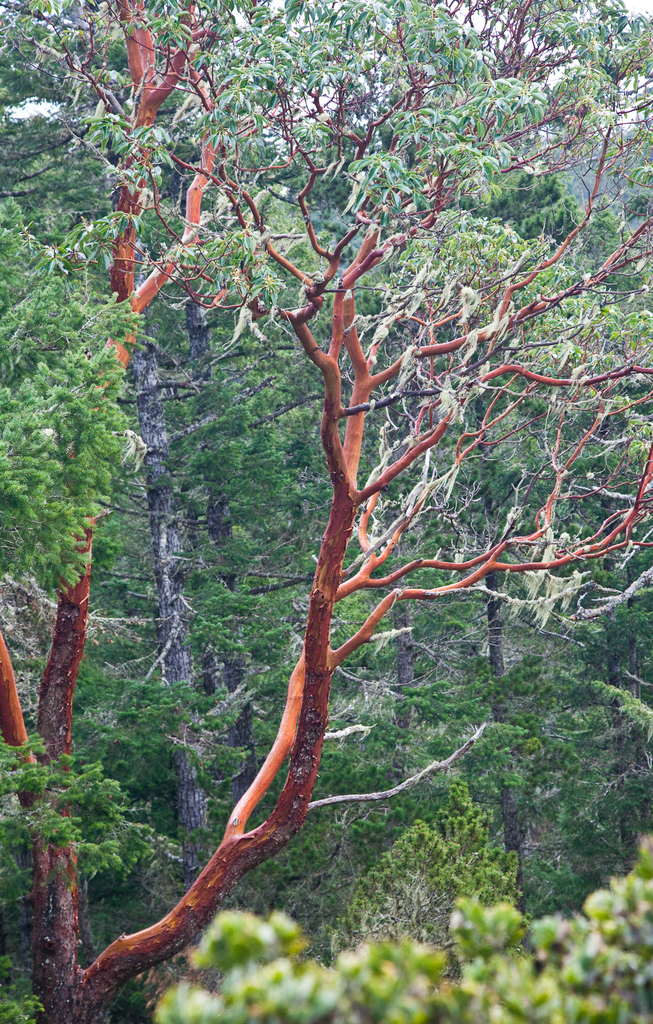
Lynn’s EQIP application for a 6-acre fuel break was approved, so in 2020 she engaged a Shaw Island company, Greenstone Excavation LLC, owned by Jonathan Hogue, to do the thinning. Lynn says the thinning targeted fast-growing species like grand fir and white fir, and left all the bigleaf maples and madrones. “Madrona need a lot of air space around them, so they’re going to be much happier now.”
In addition to making the road along Osprey Pond more firewise, Lynn hoped her project would also be the impetus for completing the management work outlined in a 2012 San Juan County Community Wildfire Protection Plan. Though written nearly a decade before, few of the activities outlined in the 2012 plan had been completed.
Lynn hoped that by leading the way with her EQIP-funded fuel break, she would inspire fellow Shaw landowners – and San Juan County – to do more fire-safe forest management work.
“We want landowners all along the road at this end of the island to have a fuel break. The idea is to have it run all along the road for a safe escape as well as for a healthier forest.”
A NEW LANDSCAPE EMERGES
Fuel break complete, Lynn marvelled at the difference she saw in the area of forest that had been thinned.
“I discovered the natural topography of my own land. Before, I couldn’t see it at all, since it was blanketed and thick with trees. Now I can see rock formations that I didn’t know were there, and this beautiful ridge, which is probably a fault line from an ancient earthquake.”
“What I’m seeing now is the way it would have looked 100 years ago, when wildfires did their thing and everything was in a natural balance. I’m seeing the right amount of baby trees, the right about of underbrush. It’s really beautiful.”
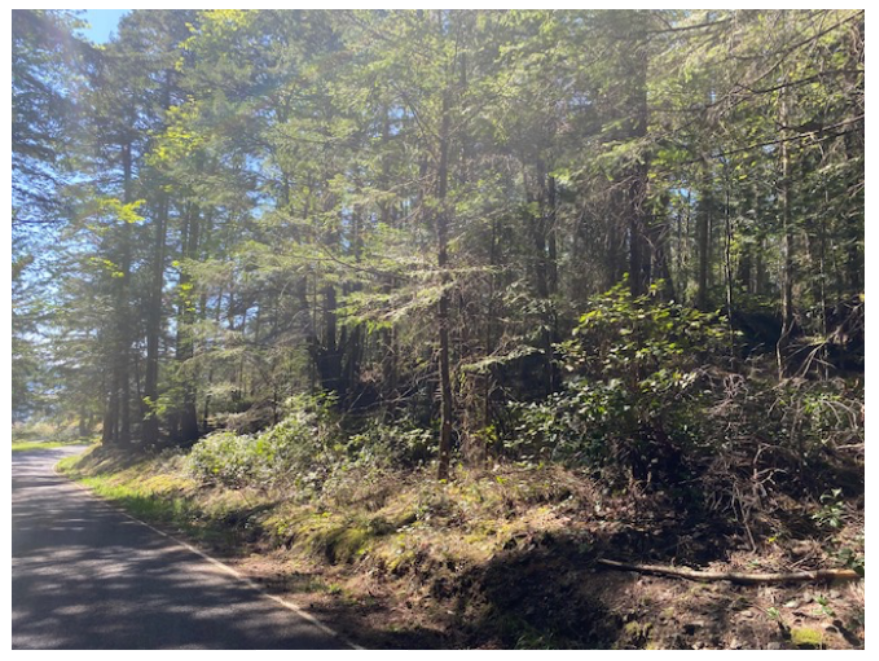

A blind curve of road along Lynn’s property, before the thinning (left) and afterwards (right). The improved visibility along the road – for both human and animal traffic – is an added benefit of the fuel break work. Photos by Lynn Bahrych.
Lynn is happy to have the fuel break, and the project has had cascading benefits for the island. Newly-secured funding from the Washington Department of Natural Resources will support the creation of more fuel breaks along another large section of the county road. Lynn has offered to share her EQIP application materials and fuel break plans with her neighbors, as she’s aware one of the hurdles to applying for EQIP funding is the paperwork involved.
Lynn plans to conduct a commercial thinning on her property in the future, to continue to reduce the density of trees in Osprey Pond’s forests and demonstrate to her neighbors how thinning can be good for a forest and a community.
But for now, she’s enjoying watching the fuel break area come back from last year’s thinning.
“I was walking around yesterday and I could see some of the grasses and the natural salal and Oregon grape starting to come back and make a natural ground cover. The understory is quickly healing itself.”
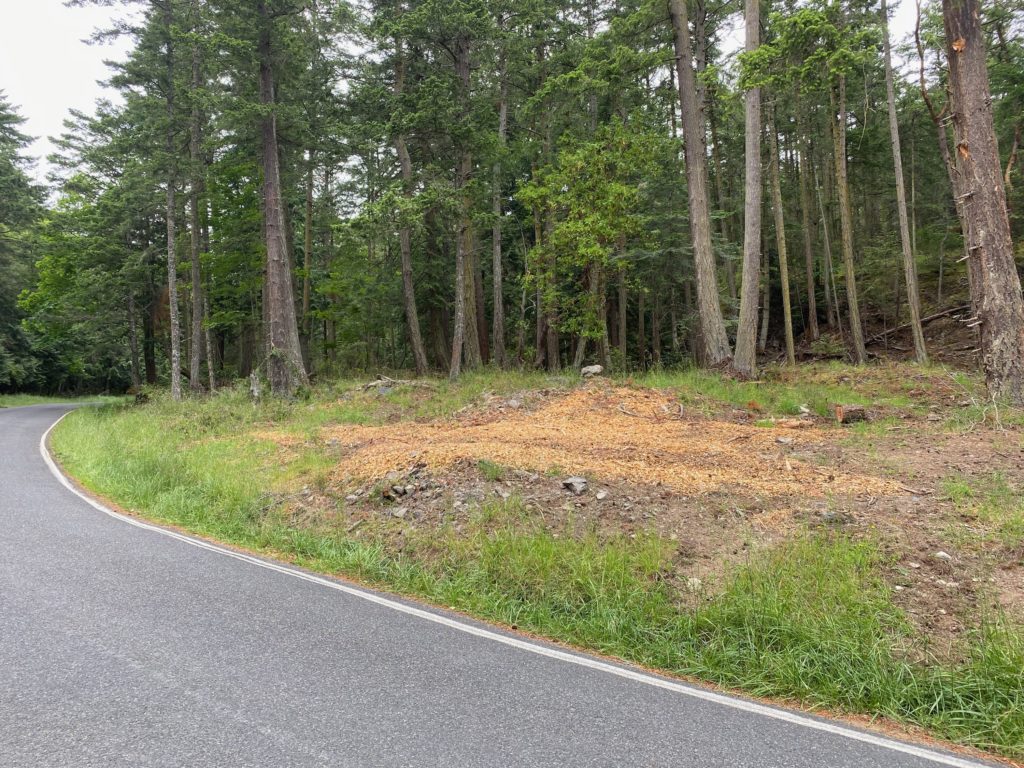

Leave a Reply